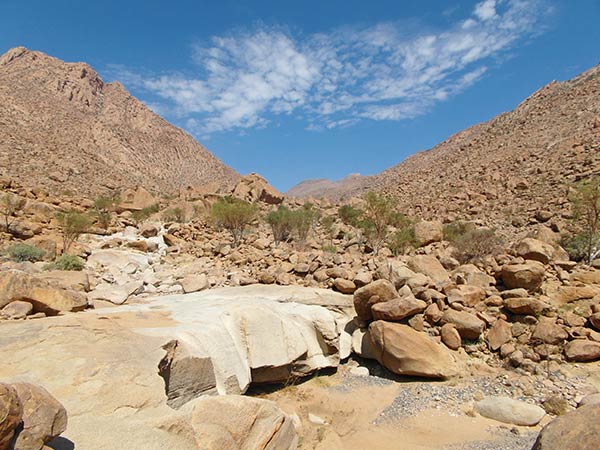
Site of Uis cave paintings, Brandberg Mountain (Enlarge)
The White Lady is a rock painting in the Brandberg Mountain massif of Damaraland in the northwestern Namibian desert. The painting is located in a cave known as Maack Shelter and portrays several human figures as well as oryxes (a type of antelope) on a rock panel measuring about 5.5 m x 1.5 m. The White Lady is the most detailed human figure in the group, and measures about 39.5 cm x 29 cm.
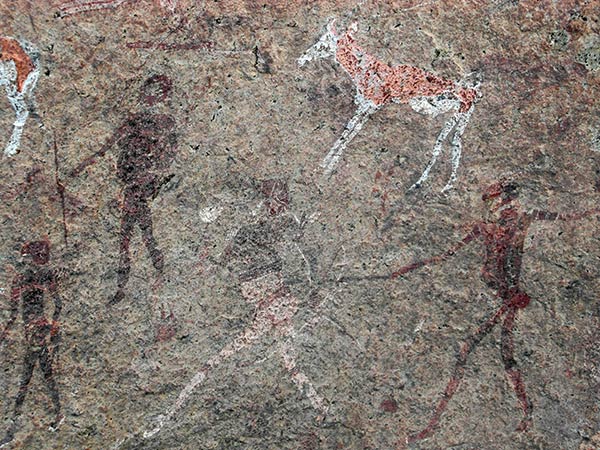
Cave painting of the 'White Lady' at Uis cave painting site, Brandenberg Mountain (Enlarge)
It is usually assumed that the painting shows some sort of ritual dance, and that the White Lady is actually a medicine man. She has white legs and arms, which may suggest that his body was painted or that he was wearing some sort of decorative attachments on his legs and arms. He holds a bow in one hand and perhaps a goblet in the other. Because of the bow and the oryxes, the painting has also been interpreted as a hunting scene. Apart from the shaman/lady, the other human figures have less detail, and are mostly completely black or completely white. One of the oryxes has human legs. The frieze appears to have spiritual significance, as several of the animals have human hind legs or human faces, conveying the merging of worlds as the healer enters into trance and the spiritual world to bring healing and request rain and abundant game for his people. The painting was probably made of ochre, charcoal, manganese and hematite, with blood serum, egg white and casein used as binding agents. The rock paintings are estimated to be approximately 1000 to 2000 years old.
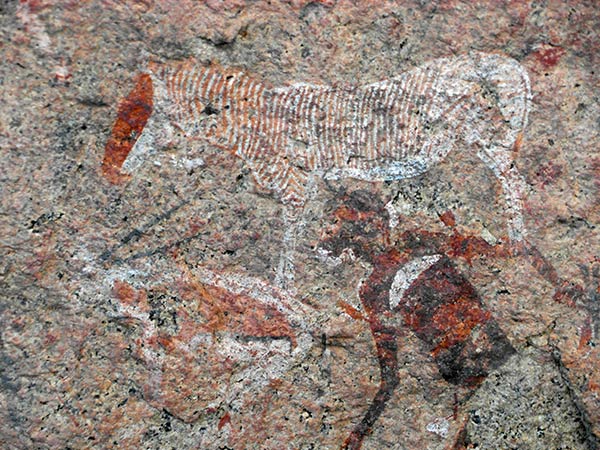
Cave paintings at Uis, Brandberg Mountain (Enlarge)
The painting has undergone severe damage since it was first discovered in the early 20th century. For a few decades, tourists used to pour water on the painting to make the colors more clearly visible in their pictures, thus causing the painting to fade quickly. The site is now a protected heritage site of Namibia, and visiting is only permitted with official guides.
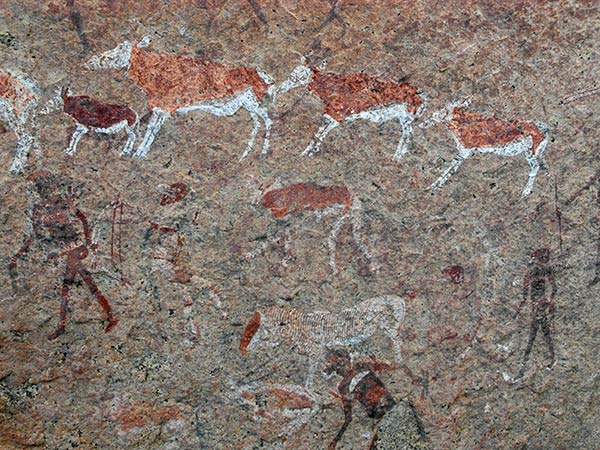
Cave paintings at Uis, Brandberg Mountain (Enlarge)
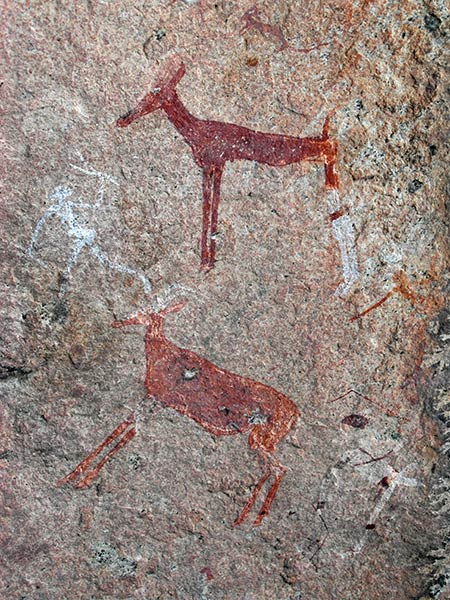
Cave paintings at Uis, Brandberg Mountain (Enlarge)
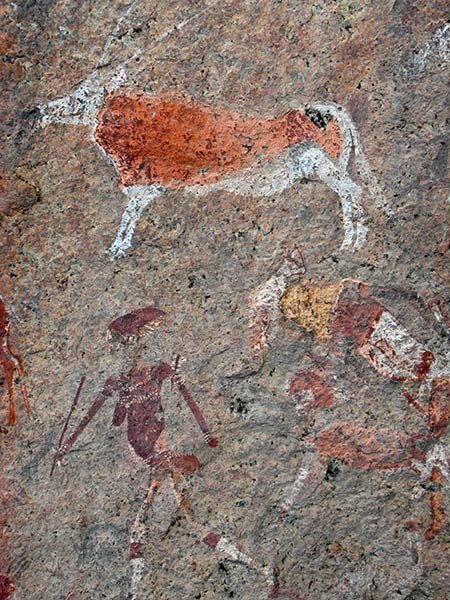
Cave paintings at Uis, Brandberg Mountain (Enlarge)
Author's note: It is inaccurate and misleading to describe and label the rock paintings and etchings in caves strewn across the vast region of southern Africa as 'rock art' for two reasons. One, while the paintings and etchings were often done with varying degrees of artistic ability, their purpose was not artistic but rather shamanic, ceremonial and therapeutic. Two, while the paintings and etchings did indeed have various shamanic, ceremonial and therapeutic functions, they are better understood to be markers of specific geographic places of power, spirit and energy. That is what is most important; whatever the (supposed) meaning of the paintings and etchings, their geographic locations are primary while the human artifacts are secondary.
 Martin Gray is a cultural anthropologist, writer and photographer specializing in the study of pilgrimage traditions and sacred sites around the world. During a 40 year period he has visited more than 2000 pilgrimage places in 165 countries. The World Pilgrimage Guide at sacredsites.com is the most comprehensive source of information on this subject.
Martin Gray is a cultural anthropologist, writer and photographer specializing in the study of pilgrimage traditions and sacred sites around the world. During a 40 year period he has visited more than 2000 pilgrimage places in 165 countries. The World Pilgrimage Guide at sacredsites.com is the most comprehensive source of information on this subject.For additional information, consult:
https://en.wikipedia.org/wiki/The_White_Lady
